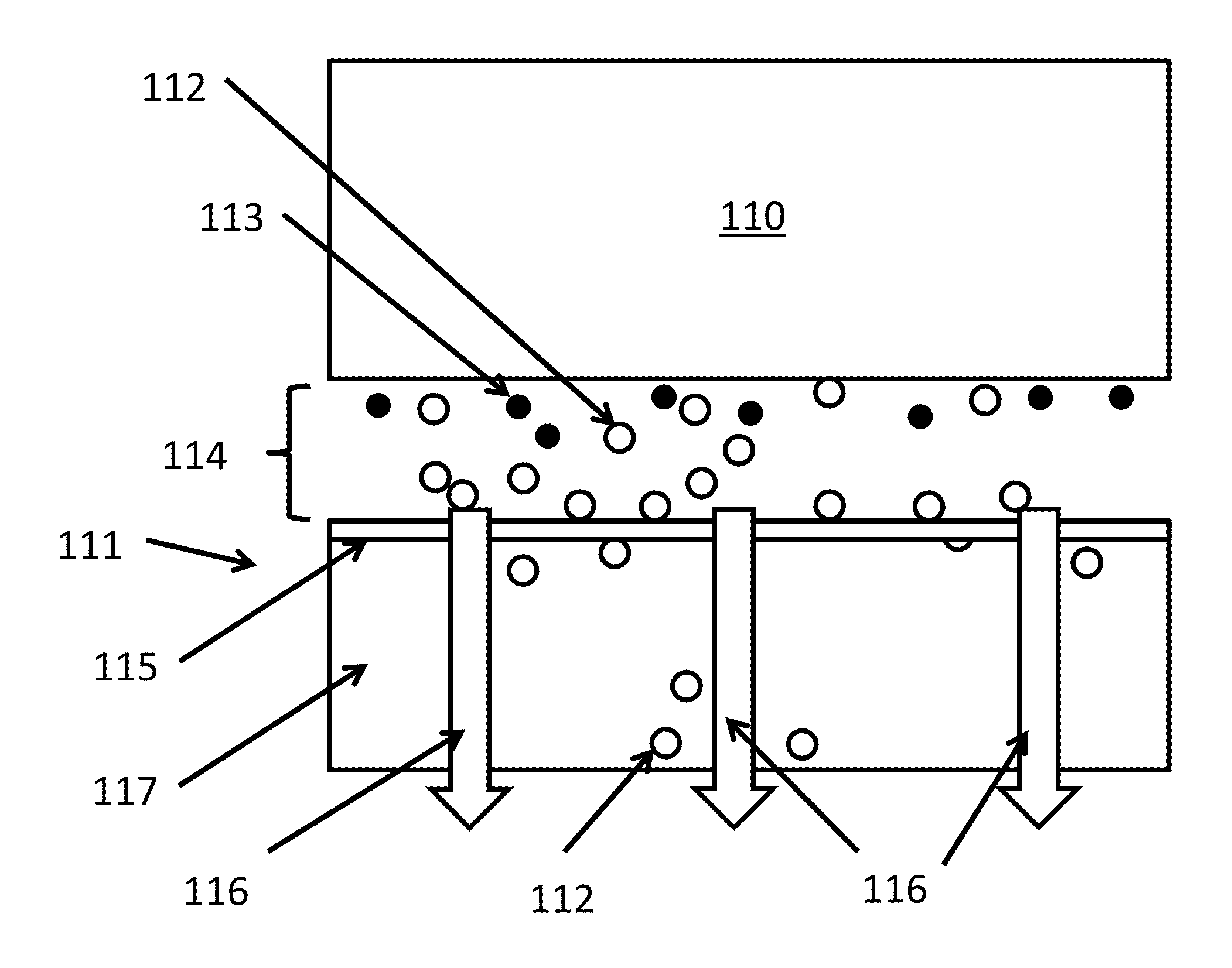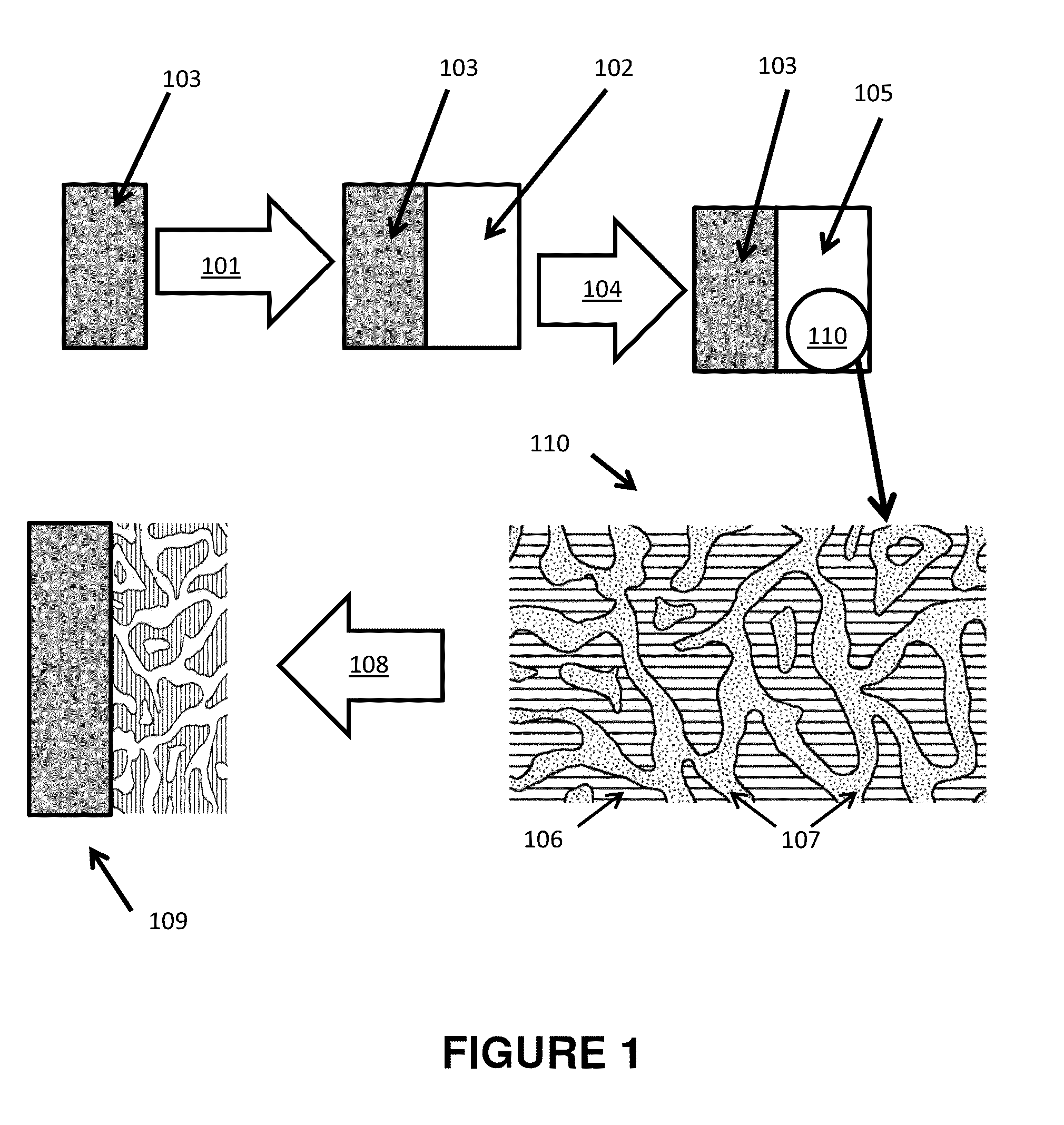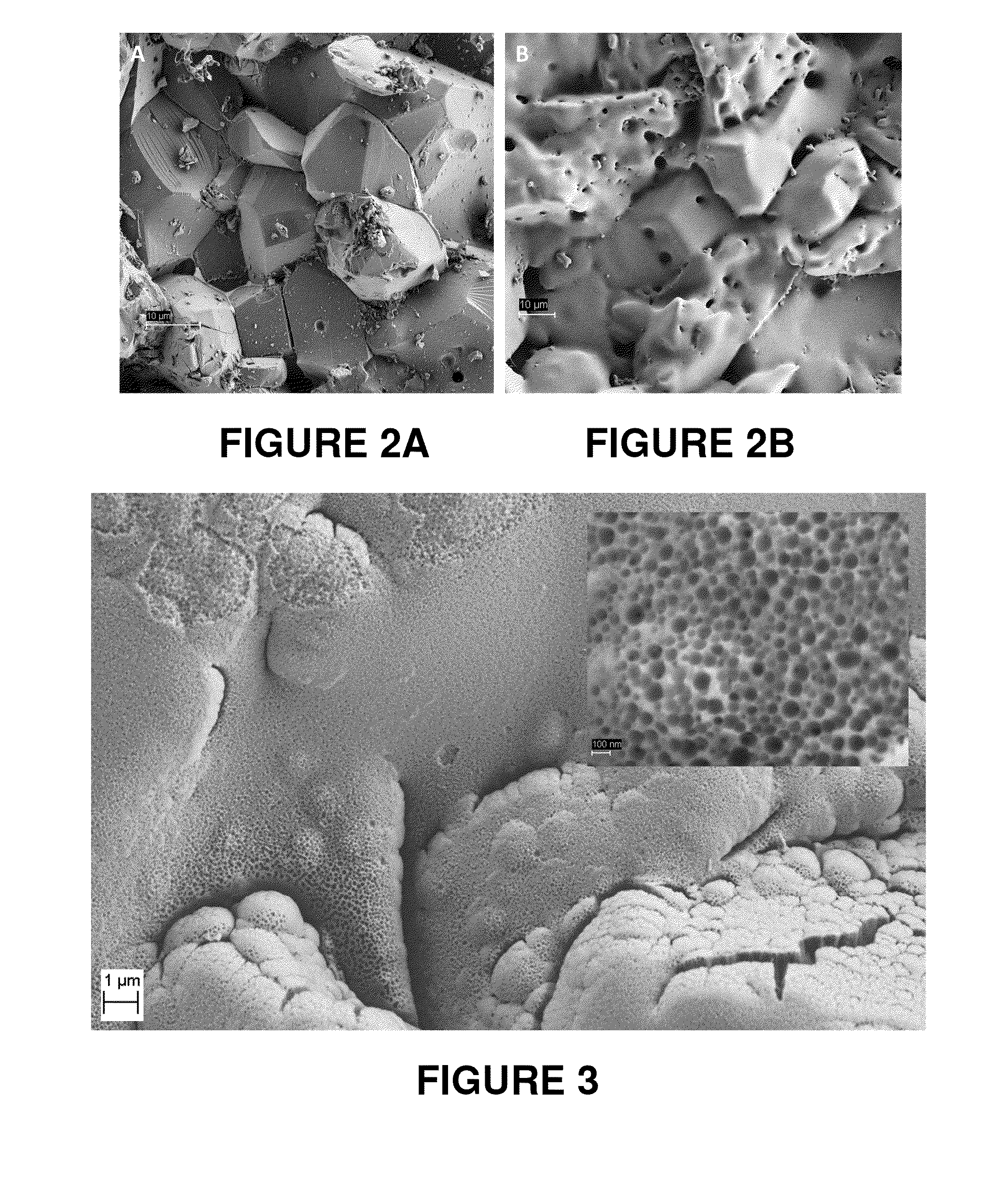Super-surface selective nanomembranes providing simultaneous high permeation flux and high selectivity
a selective nanomembrane and super-surface technology, applied in the field of membranes, can solve the problems of loss of permeation flux, limit the overall membrane performance, and lack of mechanisms that could enable both high molecular separation selectivity and high permeation, and achieve high selectivity (or separation factor), high throughput (or permeation flux)
- Summary
- Abstract
- Description
- Claims
- Application Information
AI Technical Summary
Benefits of technology
Problems solved by technology
Method used
Image
Examples
example
[0100]A radio frequency (RF) sputtering system was used to deposit a layer of borosilicate glass (66 mole % SiO2, 26 mole % B2O3, and 8 mole % Na2O) onto a porous alumina disk substrate, having a 42 mm diameter, used as received from AdValue Technology. The chamber was pumped down to 10−3 Torr by a mechanical pump, followed by a turbo pump that further reduced the base-pressure down to 10−6 Torr. The sputter target was made up of borosilicate glass. Depositions were conducted in Ar and Ar—O2 gas mixture and at room temperature. The glass film was then phase separated by heating in a box furnace under ambient atmosphere. The temperature was increased at a rate of 2 degrees Celsius per minute, to a final temperature of 700 degrees Celsius with a hold time of 20 minutes. After heating the temperature was decreased at the same rate. The samples were then etched in a 5% HF solution for 1 minute. The initial porous textured glass surface is hydrophilic, and turn into superhydrophobic afte...
PUM
| Property | Measurement | Unit |
|---|---|---|
| pore size | aaaaa | aaaaa |
| pore size | aaaaa | aaaaa |
| diameter | aaaaa | aaaaa |
Abstract
Description
Claims
Application Information
 Login to View More
Login to View More - R&D
- Intellectual Property
- Life Sciences
- Materials
- Tech Scout
- Unparalleled Data Quality
- Higher Quality Content
- 60% Fewer Hallucinations
Browse by: Latest US Patents, China's latest patents, Technical Efficacy Thesaurus, Application Domain, Technology Topic, Popular Technical Reports.
© 2025 PatSnap. All rights reserved.Legal|Privacy policy|Modern Slavery Act Transparency Statement|Sitemap|About US| Contact US: help@patsnap.com



